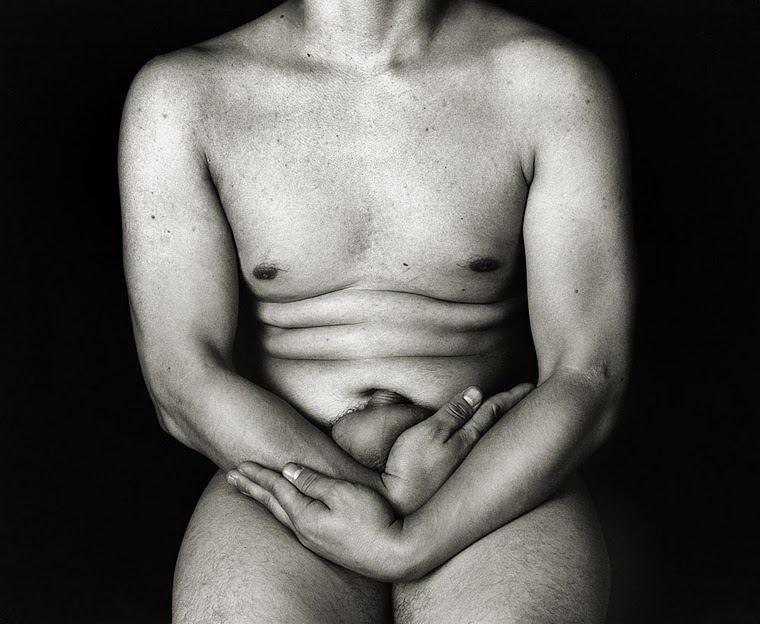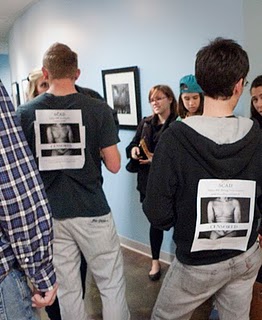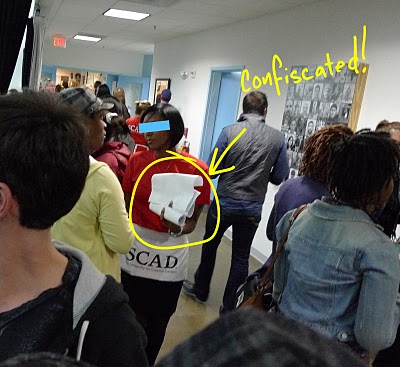 A photograph of a male nude by Savannah College of Art & Design student Nicole Craine was among the several artworks taken down before an Open Studio Exhibition at the school in October. Reportedly, the students were given no explanation as to why their work was taken down. College administrators later admitted that the content would be “unacceptable” for a “family event.”
A photograph of a male nude by Savannah College of Art & Design student Nicole Craine was among the several artworks taken down before an Open Studio Exhibition at the school in October. Reportedly, the students were given no explanation as to why their work was taken down. College administrators later admitted that the content would be “unacceptable” for a “family event.”
During the exhibition, a group of students and community members wore and passed out flyers with a photo of the censored piece, one of eight SCAD values, and the link to the censoredbyscad.blogspot.com site. The flyers were, apparently, confiscated at some point in the event by SCAD employees and some students were asked to either discard them or leave the premises.
On censoredbyscad.blogspot.com, anonymous writers described a group of security officers who they call “The Pretty Police,” who are known for acting as SCAD’s “censorship arm” and patrolling exhibits for artwork they do not like even though it has already been formally selected to be part of the exhibit. Atlanta blogger Scott Henry reports that this is not the first time he has heard of censorship of student artwork at SCAD, but it is the first time students have been willing to go public about it.
The administration of SCAD has created an atmosphere of censorship and self-censorship that should not exist at, above all places, a school of art. Though SCAD is a private institution that is not legally bound by the First Amendment, prohibiting students from showing their artwork interferes with the educational process and with general principles of academic freedom. What is appropriate or inappropriate for a “family event” is highly subjective (while the male nude was taken down, there were several female nudes and drug-related subject matter that stayed) and the best way to handle the possibility that children may attend is to inform their parents that some of the work may be unsuitable for young children.
Showing their work to an audience is, for art students, an important part of the educational process. Students that create art above the level of understanding and enjoyment of a 5th grader should not be condemned to an inferior educational experience. We hope that, in the future, SCAD demonstrated more respect for the creative freedom of it students.


